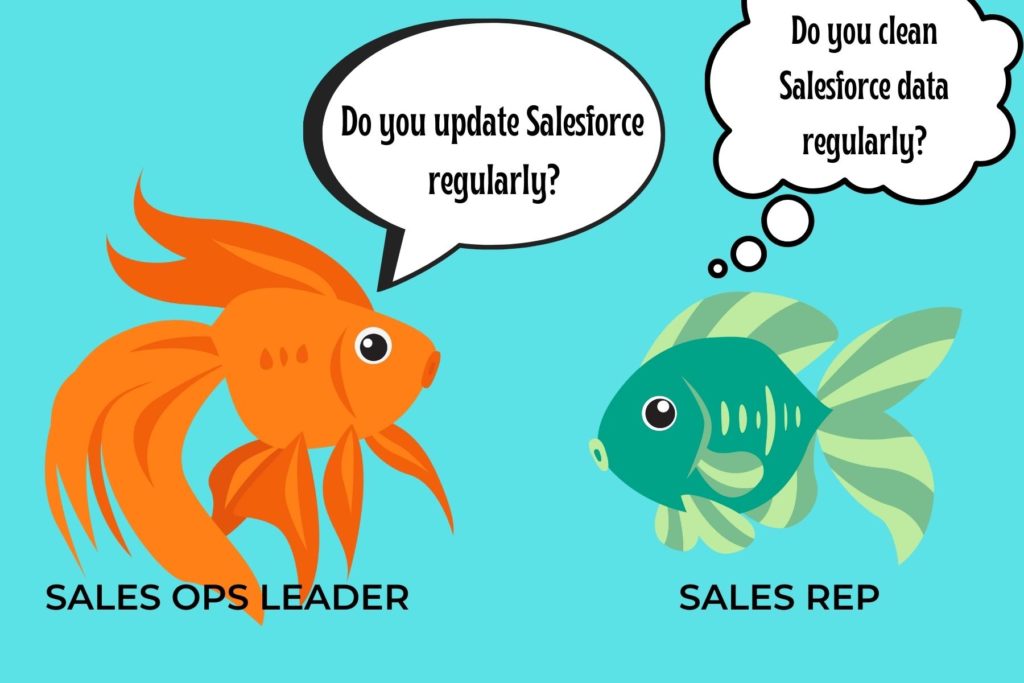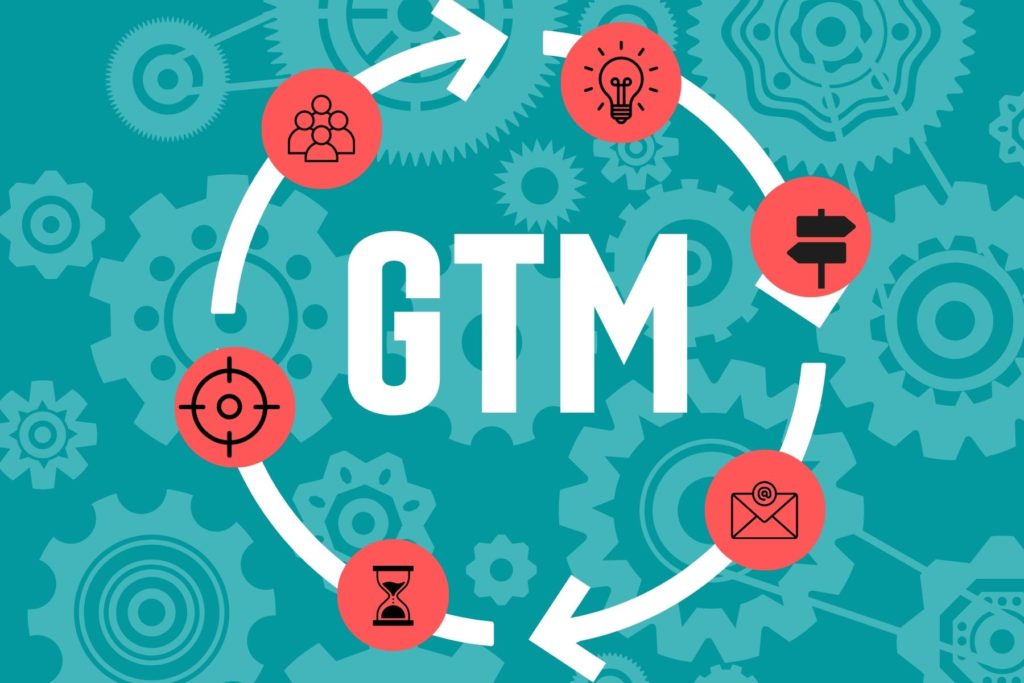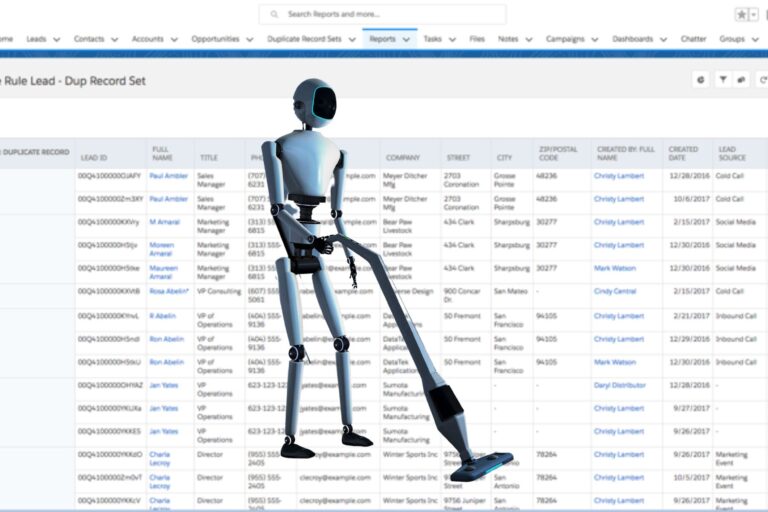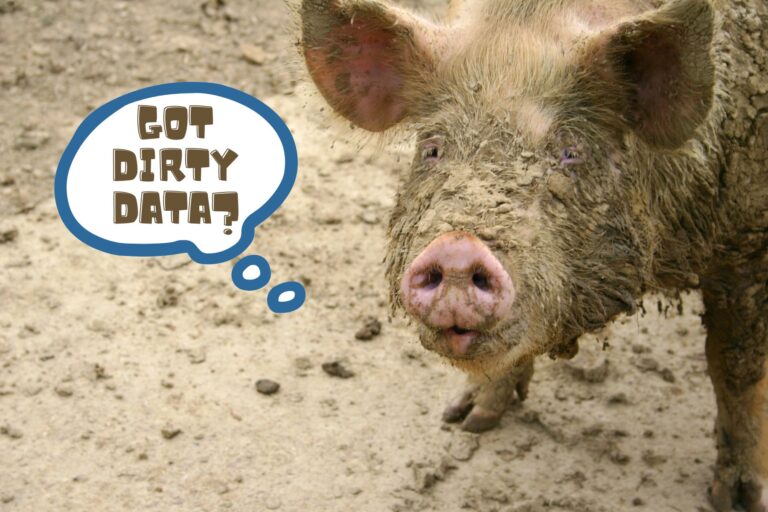Think you need to clean your data?
How good are you at solving mysteries?
Here are your clues:
#1 — Your sales reps are complaining about making calls to prospects who have moved on from their companies.
#2 — Your opportunity pipeline is overflowing with deals with inaccurate close dates.
#3 — The number of contact records in your CRM seems inflated.
#4 — Leadership has been commenting that pipeline data seems inaccurate.
No need to bring in Sherlock Holmes, right?
You’ve got dirty data.
Why You Should Care About Data Hygiene
Data is the fuel for your organization’s decision-making. It’s the backbone of forecasting and strategy. Dirty data will make your marketing team send the wrong leads to sales. And in turn, bad data has the potential to make your sales team appear unprofessional and unprepared. Ultimately, dirty data contributes to losses in productivity and ultimately revenue.
A recent Cloudingo blog described the 1-10-100 rule. This states it costs $1 per record to prevent dirty data, $10 per record to clean and dedupe, and $100 per record when no data quality practices are put into place. Clearly, the longer data quality is ignored, the more costly the solution becomes.
Getting Started with Data Cleansing
It’s common knowledge that CRM data must be cleaned regularly. So, whether it’s deduping, updating, consolidating, or eliminating, a clean database will quickly return to its dirty ways unless ongoing data management processes are in place.

If you want to make data hygiene a priority (and you should), here are four ways to get started:
- Invest in a data quality software tool
- Schedule regular maintenance of your database
- Identify and proactively address root causes of your dirty data
- Develop standard operating procedures for how you want employees to handle data
First, Salesforce recommends that you create a CRM “style guide” and hold your employees to that standard. But before you do, it’s important to get buy-in from your CRM users. If they feel they are part of the process, you are much more likely to get compliance with your style guide. And watch for this red flag: some sales people avoid using the CRM because they don’t want their bosses to know what they are — and are not — doing. Just sayin’.
Next, depending on your organization’s needs, data cleansing may be ongoing or done on a project basis. Ultimately, you want data that is valid, accurate, complete, consistent, uniform, and timely. That’s the gold standard.
Applications like Cloudingo, a LeanData integration partner, will automatically hunt for duplicates, merge records, correct formatting, standardize fields, and mass delete records, among other data cleansing services.
Dirty data is a problem, no doubt. However, don’t commit your entire budget, both time and money, as it’s not the only critical component of your data flow fueling your GTM motions. Don’t choose key tech stack solutions like data enrichment, intent data, lead routing and assignment, and integrations with sales engagement platforms simply on how they may dedupe. When designing your tech stack, you should decouple deduping from other solutions and services.
Clean Your Data, But Don’t Stop There
Many companies find that their data hygiene problem is actually part of a larger issue that needs addressing. So, while data hygiene is an important component of a successful GTM strategy, it’s just one piece of the puzzle.
You may find yourself in a situation where all of your data is a mess. So logically, you go through the process of fixing the dirty data, but then what? But, there’s more to the story.
Caleb Blondet-Fraser, LeanData’s Sales Enablement Manager says, “If you don’t think about how your data is moving around, where it’s coming into the system, or where it’s being acted on, you could just end up back where you started with messy data. You haven’t done anything that will actually move the needle for your business.”
Actioning your data is what drives revenue. A successful GTM strategy takes a CRM and all the applications related to it and makes those pieces work together to book more meetings, increase pipeline, get more customers, and prevent churn. All of these systems working together is more valuable than making sure all account names are normalized or preventing a single duplicate in the CRM.

Data cleansing is essential, but it’s not the same thing as actioning records to create revenue.
The Data Power Play: Clean, Match, Enrich & Route
The systems your marketing and sales teams use are dependent on having correct and complete information. It’s what drives the next action to take. This requires an underlying data architecture that marries, appends and cleanses disparate data and distributes that data from system to system across an integrated revenue tech stack.
Your revenue tech stack is driving your go-to-market motions. With data as its fuel, a routing solution can orchestrate the entire process, creating revenue and ROI.












